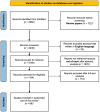The Central Noradrenergic System in Neurodevelopmental Disorders: Merging Experimental and Clinical Evidence
- PMID: 36982879
- PMCID: PMC10055776
- DOI: 10.3390/ijms24065805
The Central Noradrenergic System in Neurodevelopmental Disorders: Merging Experimental and Clinical Evidence
Abstract
The aim of this article is to highlight the potential role of the locus-coeruleus-noradrenergic (LC-NA) system in neurodevelopmental disorders (NdDs). The LC is the main brain noradrenergic nucleus, key in the regulation of arousal, attention, and stress response, and its early maturation and sensitivity to perinatal damage make it an interesting target for translational research. Clinical data shows the involvement of the LC-NA system in several NdDs, suggesting a pathogenetic role in the development of such disorders. In this context, a new neuroimaging tool, LC Magnetic Resonance Imaging (MRI), has been developed to visualize the LC in vivo and assess its integrity, which could be a valuable tool for exploring morphological alterations in NdD in vivo in humans. New animal models may be used to test the contribution of the LC-NA system to the pathogenic pathways of NdD and to evaluate the efficacy of NA-targeting drugs. In this narrative review, we provide an overview of how the LC-NA system may represent a common pathophysiological and pathogenic mechanism in NdD and a reliable target for symptomatic and disease-modifying drugs. Further research is needed to fully understand the interplay between the LC-NA system and NdD.
Keywords: ADHD; autism; childhood epilepsy; developmental disorders; locus coeruleus; neurodevelopment; neurogenesis; neuropediatric; noradrenaline.
Conflict of interest statement
The authors declare no conflict of interest.
Figures



References
-
- American Psychiatric Association . Diagnostic and Statistical Manual of Mental Disorders—Text Revision. 5th ed. American Psychiatric Association; Washington, DC, USA: 2022.
Publication types
MeSH terms
Substances
LinkOut - more resources
Full Text Sources

